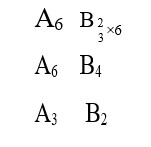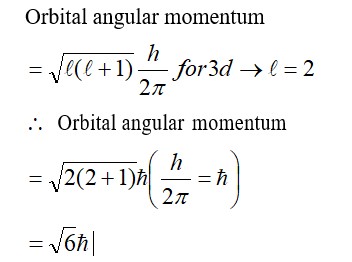17. For the reaction at 298 K, 2A + B → C
ΔH = 400 kJ mol–1 and ΔS = 0.2 kJ K–1 mol–1
At what temperature will the reaction become spontaneous considering ΔH and ΔS to be constant over the temperature range?
17. For the reaction at 298 K, 2A + B → C
ΔH = 400 kJ mol–1 and ΔS = 0.2 kJ K–1 mol–1
At what temperature will the reaction become spontaneous considering ΔH and ΔS to be constant over the temperature range?
-
1 Answer
-
17. As per the Gibbs Helmholtz’s equation:
ΔG = Δ H - TΔ S
For ΔG=0;
ΔH=TΔS
Or T=ΔH/ΔS
T = (400 KJ mol-1)/ (0.2 KJ K-1 mol-1)
= 2000 k
Thus, reaction will be in a state of equilibrium at 2000 K and will be spontaneous above this temperature
Similar Questions for you
Kindly go through the solution
(1) [Ni (NH3)6]+2 → Ni+2 → d8, C. No. = 6,
SP3d2, Para
(2) [Co (H2O)6]+2 → Co+2 → d6, C. No. = 6
d2sp3, Dia
(3) [Ti (H2O)6]+3 → Ti+3 → d1, C. No. = 6
d2SP3, Para
(4) [Co (NH3)6]+3 → Co+3 → d5, C. No. = 6
d2sp3, Para
Taking an Exam? Selecting a College?
Get authentic answers from experts, students and alumni that you won't find anywhere else
Sign Up on ShikshaOn Shiksha, get access to
- 65k Colleges
- 1.2k Exams
- 679k Reviews
- 1800k Answers



